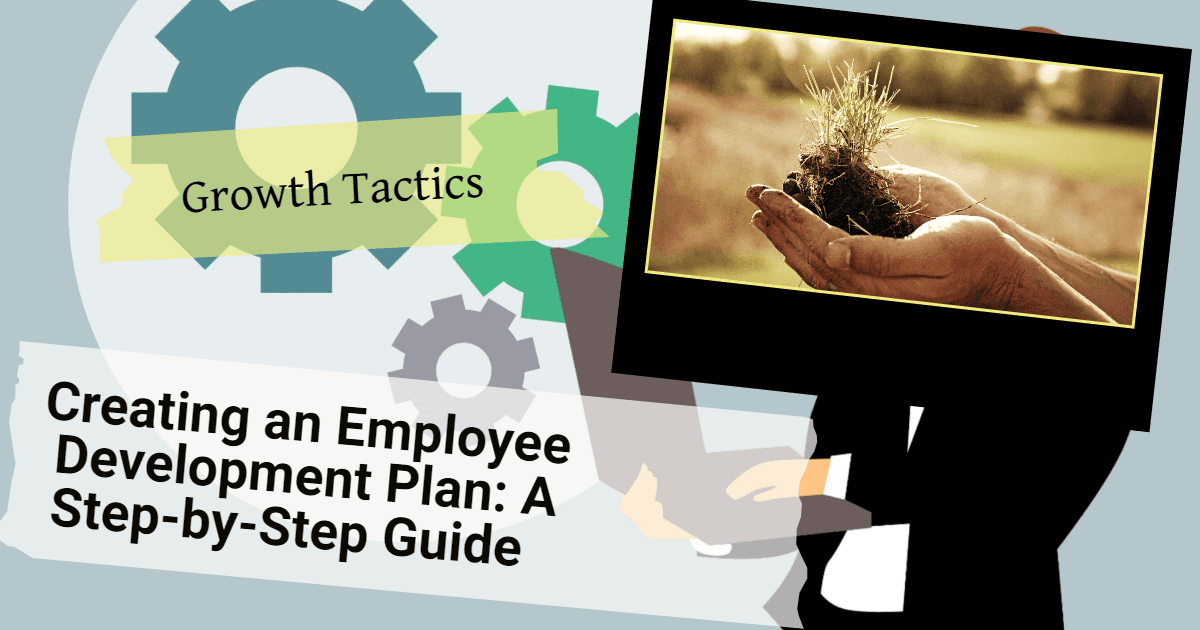Are you interested in developing your employees and helping them reach their full potential? Well, you’ve come to the right place! In this article, we’ll dive into the world of employee development plans and show you how to create an effective one that benefits both your employees and your company. So, let’s get started!
What is an Employee Development Plan?
Before we jump into the nitty-gritty details, let’s start with the basics. An employee development plan is a tool used by organizations to assist employees in achieving their professional goals and improving their skills. It’s like a roadmap that helps your employees navigate their career paths, identify areas for growth, and set actionable steps to reach their objectives.

Why is an Employee Development Plan Worth Creating?
Are you unsure if creating an employee development plan is worth your time and effort? Let me assure you, it absolutely is! In this section, we’ll explore the many reasons why investing in an employee development plan is a game-changer for both your employees and your company.
Boost Employee Satisfaction and Engagement
When you provide your employees with a clear and structured path for their professional growth, it shows them that you care about their success. They feel valued and supported, which naturally leads to increased job satisfaction and higher levels of engagement. Who wouldn’t want to work for a company that invests in their growth and development?
Improve Employee Retention
In today’s competitive job market, retaining top talent is more crucial than ever. By offering your employees opportunities to develop new skills, expand their knowledge, and advance their careers, you create a sense of loyalty and commitment. Employees feel motivated to stay with your company, knowing that their long-term success is a priority.
Enhance Productivity
When your employees have access to the right skills and knowledge, they become more efficient and effective at their jobs. By investing in their development, you’re equipping them with the tools they need to excel. This increase in productivity not only benefits your employees personally but also has a positive impact on your company’s bottom line.
Foster a Positive Company Culture
One of the key ingredients for a thriving company is a positive and supportive culture. When you invest in employee development, you send a clear message that you value your workforce and are committed to their growth. This creates a work environment where employees feel valued, motivated, and inspired to do their best work. In turn, this positive culture attracts top talent and sets your company apart from the competition.

Crafting an Employee Development Plan: Step-by-Step
Okay, now that you understand the importance of an employee development plan, let’s dive into the creation process. We’ll break it down into several key steps, so it’s easy to follow along.
Step 1: Define Clear Goals
The first and most crucial step in creating an employee development plan is clarifying the goals. Employees should have a clear understanding of what they want to achieve and how it aligns with the company’s objectives. By identifying specific goals, such as improving leadership skills or mastering new technology, you can create a roadmap that helps your employees work towards those targets effectively.
Step 2: Assess Development Needs
To ensure your employee development plan is tailored to each individual, it’s essential to assess their development needs. Evaluate their current skills and competencies, as well as their career aspirations. This assessment will help you identify any gaps and determine the most suitable development opportunities for each employee.
Step 3: Identify Suitable Development Opportunities
Once you’ve assessed the development needs of your employees, it’s time to pinpoint the most suitable development opportunities. These may include attending training programs, participating in workshops or conferences, receiving mentorship, or even taking on stretch assignments. Tailor the opportunities to each employee’s specific goals and learning preferences.
Step 4: Create an Action Plan
Now that you have identified the development opportunities, it’s time to create an action plan. Break down the process into actionable steps that your employees can follow. Be sure to include deadlines and milestones to keep them on track. Having a well-defined action plan makes the development process more manageable and provides a clear roadmap for both the employee and their manager.
Step 5: Monitor Progress and Provide Support
As your employees embark on their development journeys, it’s important to monitor their progress regularly and offer support along the way. Schedule check-ins to discuss their growth, provide feedback, and address any challenges they may be facing. By staying involved and showing genuine interest, you can ensure that the development plan stays on track and offers maximum benefits.
Step 6: Review and Adjust as Needed
An effective employee development plan is a living document that should be regularly reviewed and adjusted as needed. As employees grow and their goals evolve, it’s essential to revisit the plan and make any necessary updates. This iterative process ensures that the plan remains relevant and continues to support their development.

Who Should You Create a Professional Development Plan for?
Are you wondering who would benefit from a professional development plan? Well, the short answer is: everyone! In this section, we’ll explore who can benefit from a professional development plan and why it’s valuable for individuals at all levels of your organization. So, let’s dive in!
Entry-level Employees: Building a Strong Foundation
Newcomers to the workforce have a lot to gain from a professional development plan. It provides them with the necessary skills and knowledge to succeed in their current roles and sets them up for future growth. By investing in their development from day one, you’re giving entry-level employees the tools they need to build a strong foundation for their careers.
Mid-level Professionals: Accelerating Growth
Mid-level professionals who have already established themselves in their careers can benefit significantly from a professional development plan. It allows them to hone their expertise, gain new skills, and broaden their perspectives. With a tailored plan, they can take on additional responsibilities, advance in their careers, and position themselves as leaders within the organization.
Upper Management: Nurturing Leadership Skills
Even seasoned leaders can benefit from a professional development plan. It provides them with opportunities to refine their leadership capabilities, stay abreast of industry trends, and develop strategic thinking. By investing in the growth and development of your upper management, you’re nurturing their leadership skills and creating a ripple effect throughout the organization.
Helping Employees Develop Career Goals
Are you ready to help your employees take charge of their career paths and set meaningful goals? Fantastic! In this section, we’ll discuss how you can support your employees in developing their career goals. Let’s dive in and empower your team to reach new heights!
The Importance of Career Goals
Setting clear and actionable career goals is essential for employee growth and motivation. It gives employees a sense of direction and purpose, allowing them to focus their efforts on achieving meaningful milestones in their careers. By helping your employees develop their career goals, you demonstrate your commitment to their success and satisfaction within the organization.
Encourage Reflection and Self-Assessment
To help employees develop their career goals, encourage them to take time for self-reflection and self-assessment. Encourage them to think about their strengths, passions, and areas for growth. By understanding their values, interests, and skill sets, employees can align their goals with their personal and professional aspirations.
Provide Guidance and Resources
Active voice: Providing guidance and resources helps employees develop clear and actionable career goals.
As an expert in the field of employee development, you have the knowledge and resources to guide your employees in setting clear and actionable career goals. Share your expertise by offering guidance on different career paths, potential growth opportunities within the organization, and relevant resources such as workshops, courses, or mentorship programs. By providing this support, you empower employees to make informed decisions about their career paths.
Foster Regular Goal Review and Adjustments
Just like any plan, career goals should be reviewed and adjusted periodically. Encourage your employees to regularly assess their progress, celebrate their achievements, and make any necessary adjustments to their goals. By fostering a culture of continuous reflection and growth, you create an environment where employees feel supported in their journey to reach their career goals.
Offer Ongoing Support and Development Opportunities
Supporting your employees’ career goals doesn’t stop at setting them. Continuously offer support and provide development opportunities that align with their goals. This can include training programs, mentorship, challenging assignments, or opportunities to develop new skills. By investing in their growth, you show your employees that you’re dedicated to helping them succeed.
Types of Employee Development Programs
On-the-job training: On-the-job training allows employees to learn and develop new skills while performing their regular job duties. This hands-on approach provides practical experience and helps employees apply what they’ve learned directly to their work. Examples of on-the-job training include job shadowing, cross-training, and stretch assignments.
Formal Education and Certifications: Encouraging employees to pursue formal education or attain relevant certifications is a valuable way to invest in their development. Whether it’s sponsoring tuition for a degree program or supporting employees in obtaining industry-specific certifications, these opportunities not only enhance skills but also demonstrate your commitment to their long-term success.
Coaching and Mentoring: Pairing employees with experienced mentors or coaches can be a transformative experience. Mentors provide guidance, support, and feedback, helping employees navigate challenges and unlock their full potential. This personalized approach fosters a sense of belonging, while providing employees with the tools and resources they need to excel in their roles.
Key Takeaways
An employee development plan is a valuable tool for supporting your employees’ growth and development within the organization.
Creating a development plan involves defining clear goals, assessing development needs, identifying suitable opportunities, creating an action plan, monitoring progress, and reviewing and adjusting as needed.
By investing in your employees’ development, you can increase satisfaction, retention, and productivity, and foster a positive company culture.
Remember, creating a successful employee development plan takes time and effort, but the rewards are worth it. So, go ahead and empower your team members to reach new heights and achieve their professional goals. Happy developing!


